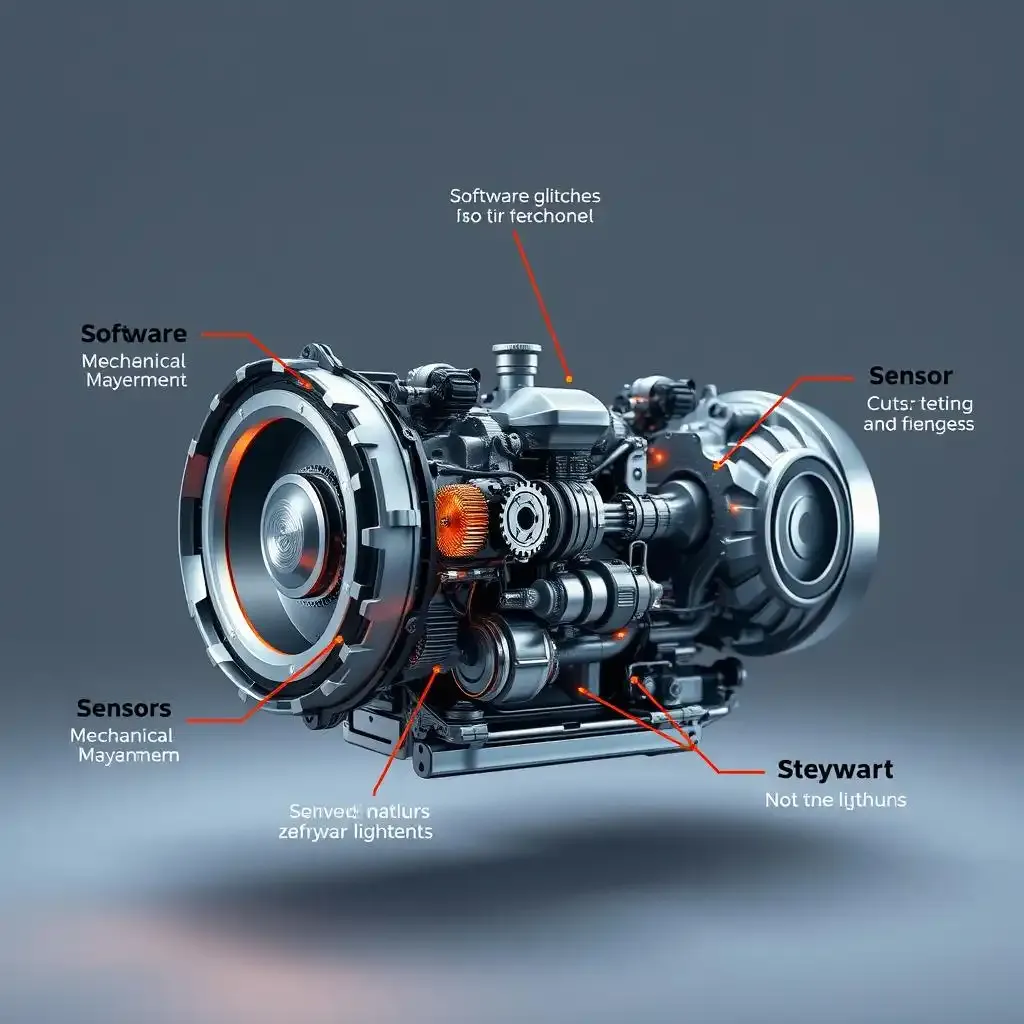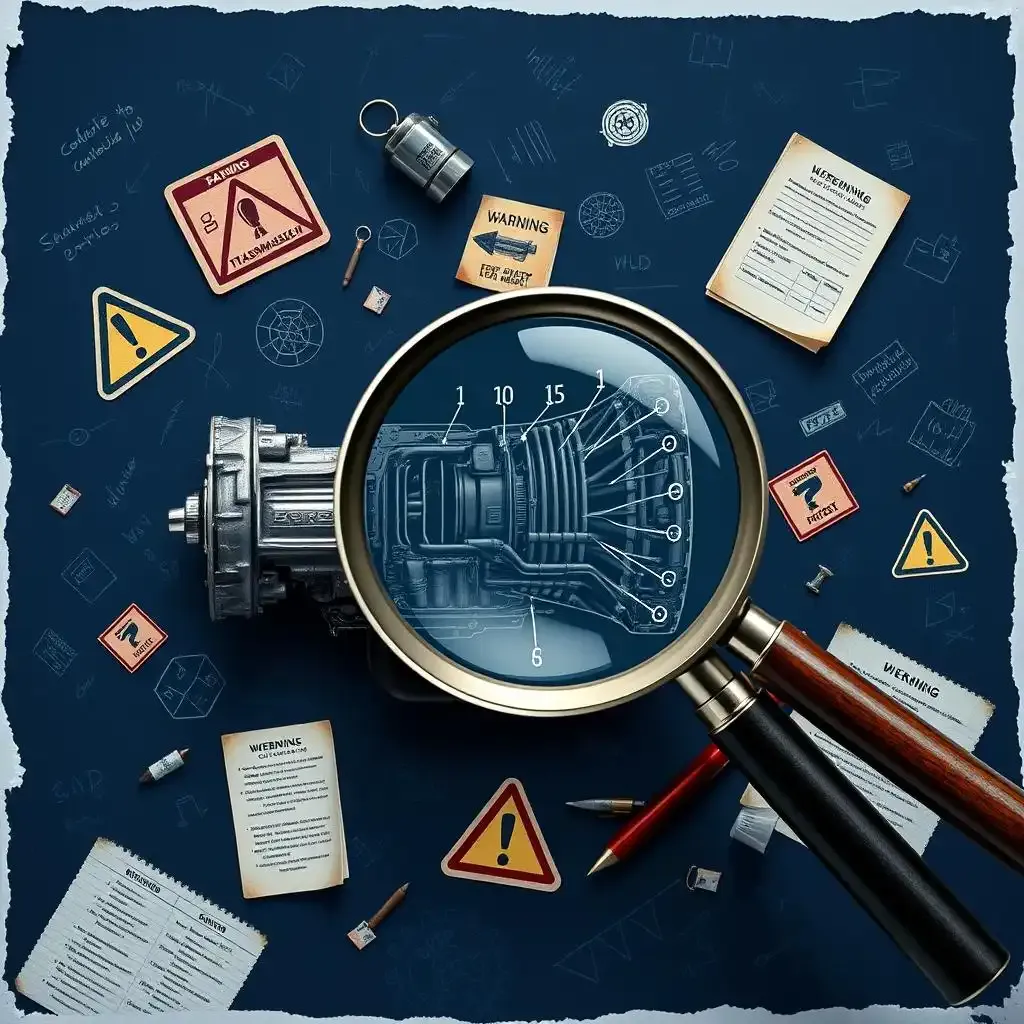Table of Contents
The Ford Everest, a vehicle celebrated for its ruggedness and capability, has faced some challenges with its 10-speed automatic transmission. Owners have reported a range of issues, from unsettling rough shifts to alarming hesitations during acceleration. These aren’t just minor annoyances; they can affect the overall driving experience and, in some cases, raise concerns about safety. This article will explore these Ford Everest 10-speed transmission problems, examining specific symptoms, investigating into potential causes, and offering guidance for owners and prospective buyers. We aim to cut through the jargon and provide clear, actionable information about the Ford Everest 10-speed transmission problems. We will look at the common complaints, explore the technical aspects, and give you a better understanding of what might be going on under the hood. This isn't about bashing the Everest, but about giving you the facts so you can make informed decisions about your vehicle.
Issue | Description | Potential Causes | Action |
|---|---|---|---|
Rough Shifting | Gears shift abruptly and uncomfortably. | Software glitches, low transmission fluid, worn components. | Check fluid level, update software, seek professional inspection. |
Hesitation on Acceleration | Delay or lag when pressing the gas pedal. | Sensor issues, valve body problems, transmission control module fault. | Diagnostic check, software update, component replacement. |
Gear Slippage | Engine revs but the vehicle doesn't accelerate properly. | Worn clutch packs, internal transmission damage, low fluid. | Immediate professional assessment and repair needed. |
Hanging in Gear/Neutral | Transmission stays in gear or neutral between shifts, causing engine surge. | Valve body malfunction, sensor failure, software issues. | Professional diagnostic scan, software update, component repair. |
Harsh Shifting, Jerking | Jerky and uncomfortable gear changes. | Mechatronic unit problems, worn clutches, fluid contamination. | Fluid flush, mechatronic unit check, component replacement. |
Staying in High Gear at Stops | Transmission doesn't downshift properly, causing a violent jerk when engaging. | Control module issues, solenoid problems, software bugs. | Professional diagnosis, software recalibration, component repair. |
Safety Concerns | Reports of "life-threatening" issues due to transmission problems. | Severe transmission malfunctions, unexpected loss of control. | Immediate professional evaluation and repair, prioritize safety. |
Common Ford Everest 10Speed Transmission Problems
The Shifting Saga
Okay, so imagine your Ford Everest's 10-speed transmission is like a super-complicated bike with ten gears. Normally, it should shift smooth as butter, right? But sometimes, it acts like it's got a mind of its own. I've heard stories about these transmissions feeling like they're hiccuping when they shift. It's not a gentle glide; it's more like a little jolt, or like the car is trying to decide which gear it wants, and it's not making up its mind quickly. This rough shifting can make for a bumpy ride, and it's not what you expect from a modern car. It's like trying to play a video game with a laggy controller; it's frustrating, and you're not getting the smooth experience you wanted.
Hesitation and Gear Confusion
And it's not just rough shifts. Some owners have told me about their Everest hesitating when they try to speed up, like the car's taking a nap before deciding to go. It's like you're asking it to run, but it's still putting on its shoes. This delay when you hit the gas can be a real pain, especially when you need to get going quickly. Then there's the gear confusion. This can happen when the transmission gets stuck in the wrong gear, like trying to climb a hill in top gear. Or even worse, it might hang in neutral between gears, which is like the car forgetting what it's supposed to be doing. This can cause the engine to rev up suddenly, which is not only annoying but can also be a bit scary. It's like the transmission is playing a game of "what gear am I in?" and you're just along for the ride.
Problem | Description |
|---|---|
Rough Shifting | Gears change with a jerk, not smoothly. |
Hesitation | Car delays when you try to speed up. |
Gear Slippage | Engine revs, but car doesn't accelerate properly. |
Hanging in Gear | Transmission gets stuck between gears. |
Detailed Look at Shifting Issues in the Ford Everest

Detailed Look At Shifting Issues In The Ford Everest
Let's get real about these shifting problems. It's not just a little hiccup; it's like the car's having a full-blown argument with itself every time it tries to change gears. Think of it like this: you're trying to do a smooth dance move, but your feet keep tripping over each other. That's what the Everest's transmission can feel like. Sometimes, it's a small jolt, like a gentle nudge. Other times, it's a full-on shove, making you wonder if your teeth are still in place. It's like the car can't decide whether it wants to be a smooth operator or a bucking bronco. And trust me, it's not a fun guessing game when you're behind the wheel. It affects how the whole car moves. It's not like the engine is at fault here, it's more like the gearbox is acting like a grumpy teenager who doesn't want to do what it's supposed to be doing.
Now, it's not always just about the roughness. Sometimes, it's about the timing, or rather, the lack of it. I've heard from people who describe this hesitation like the car is having a brain freeze. You press the accelerator, expecting a burst of speed, but instead, you get a moment of nothingness. It's like the car is thinking, "Wait, are we really doing this?" before finally deciding to go. This hesitation can be really annoying, especially when you're trying to merge onto a highway or overtake another car. It's that moment of uncertainty that can make you feel like you're not fully in control. And it's not just a minor delay, it can sometimes feel like an eternity, leaving you wondering if the car has forgotten how to accelerate. Then, to add to the chaos, the transmission can get confused about which gear it should be in. This is like trying to play a musical instrument but hitting all the wrong notes. It gets stuck, and the car doesn't know what to do. This leads to the engine surging, which is not a pleasant experience.
Issue | Description | Impact |
|---|---|---|
Rough Shifting | Jerky, uncomfortable gear changes | Unpleasant ride, feels like a mechanical hiccup |
Hesitation | Delay when accelerating | Frustrating, feels like a lack of response |
Gear Confusion | Stuck in wrong gear or neutral | Engine surging, feels unsafe |
Potential Causes of Ford Everest Transmission Problems

Potential Causes Of Ford Everest Transmission Problems
Software Gremlins
Okay, so sometimes the problem isn't with the actual gears and metal bits, but with the computer brain that controls the transmission. Think of it like this: your phone can sometimes act weird when it needs an update, right? It's the same for the Everest's transmission. The software that tells the transmission when to shift can sometimes get a bit confused or have bugs. This can lead to those rough shifts and hesitations we talked about. It's like the computer is trying to play a game but keeps getting the rules wrong. A simple software update can sometimes fix this, like giving your car's brain a little refresher course.
Mechanical Mayhem
But it's not always just a software issue. Sometimes, the actual parts inside the transmission can be the troublemakers. Imagine the transmission is like a really complex clock, with lots of gears and valves all working together. If one of those parts gets worn out or damaged, it can cause the whole thing to act up. For example, the valve body, which controls the flow of fluid, can get clogged or worn, which can lead to jerky shifts. Or the clutch packs, which help engage the gears, can wear out and cause slipping. It's like having a wobbly wheel on your bike; it's not going to run smoothly. These kinds of problems usually need a proper mechanic to take a look and fix the broken parts.
Potential Cause | Analogy | Impact |
|---|---|---|
Software Glitches | Like a buggy phone app | Erratic shifting, hesitations |
Worn Valve Body | Like a clogged pipe | Jerky, rough shifts |
Worn Clutch Packs | Like worn out bike brakes | Slipping gears, poor acceleration |
Fluid Follies
Another thing that could be messing with the transmission is the fluid inside. This isn't like the oil in your engine; it's special transmission fluid. It's like the blood of the transmission, helping everything run smoothly. If the fluid is low, dirty, or old, it can make the transmission act all weird. It's like trying to run a race with old, worn-out shoes. Low fluid can cause the transmission to slip and overheat. Dirty fluid can clog up the valves and make shifting rough. It's important to check the fluid regularly and make sure it's clean and at the right level. Think of it as giving your car a nice, refreshing drink.
Sensor Snafus
Finally, let's talk about the sensors. These little guys are like the eyes and ears of the transmission, telling the computer what's going on. If one of these sensors is faulty, it can send wrong information to the computer, which can cause all sorts of problems. It's like trying to follow a map that's got some wrong turns on it. For example, a sensor might say the car is going slower than it actually is, which would make the transmission shift at the wrong time. This can lead to rough shifts or hesitation. Sometimes, it's just a faulty sensor that needs replacing, which can fix the problem quickly. It’s like getting a new pair of glasses, everything becomes clear again.
"The transmission is a complex system, and problems can stem from a variety of sources. It's crucial to diagnose the issue accurately before attempting any repairs." - Anonymous Automotive Engineer
- Low Transmission Fluid
- Dirty Transmission Fluid
- Faulty Sensors
Navigating Ford Everest 10Speed Transmission Issues

Navigating Ford Everest 10speed Transmission Issues
Keeping an Eye Out
So, you've got this Ford Everest, and you're starting to notice some weirdness with the transmission. It's like having a pet that suddenly starts acting strange, right? The first thing to do is to be a good car detective. Pay attention to how your Everest is shifting. Is it smooth, or is it like a bumpy rollercoaster ride? Does it hesitate when you put your foot down, like it's thinking about whether it wants to go? These little things are clues. If you catch these issues early, it's like catching a cold before it turns into the flu; it's much easier to handle. Don't just ignore it thinking it'll get better on its own. You'd go to the doctor if you felt sick, so you need to go to the mechanic if your car feels sick.
Documenting the Drama
Now, I know it might sound a bit nerdy, but keeping a record of what's going on with your transmission is super helpful. It's like keeping a diary for your car. Write down when the rough shifts happen, if it's when the engine is cold or if its when you're going uphill. Note any weird noises or hesitations. It's like being a witness at a crime scene; details matter! When you go to the mechanic, this information is like gold. It helps them figure out what's going on faster. Think of it as giving your mechanic a cheat sheet to your car's problems. And if you've got the issue and the car is still under warranty, this will make the process so much easier.
Action | Why it's important |
|---|---|
Pay attention to shifts | Catch issues early |
Document problems | Help mechanics diagnose quickly |
Seeking Expert Help
Okay, you've noticed something isn't quite right, and you've got your notes all ready. Now it's time to get a professional involved. Think of your mechanic as a car doctor. They've seen all sorts of car ailments, and they know what to look for. Don't just go to any mechanic; find one that knows Ford transmissions. It's like going to a specialist doctor instead of a general one. A good mechanic will be able to plug your Everest into a computer and see what's going on inside. They'll also be able to check for any physical damage or fluid problems. It's like giving your car a full check-up.
Taking Action Wisely
Once you know what's going on, it's time to act. This might involve getting a software update for your transmission, which is like giving its brain a tune-up. Or, it might mean replacing some worn-out parts, which is like giving it new shoes to run in. Sometimes, it might be a simple fix, like topping up the transmission fluid, which is like giving it a refreshing drink. Don't be scared to ask questions and make sure you understand what's being done. It's your car, and you have a right to know what's going on. It's like being the captain of a ship; you need to know how to steer it. And remember, ignoring the problem won't make it go away, it'll just make it worse. It's better to tackle these things head-on.
"A proactive approach to vehicle maintenance is always the best strategy. Addressing issues early can prevent more costly repairs down the road." - Automotive Maintenance Expert
- Find a qualified mechanic.
- Get a proper diagnostic check.
- Consider software updates.
- Address parts issues.
- Don't ignore the problem.
Wrapping Up Ford Everest Transmission Issues
The Ford Everest's 10-speed transmission, while designed for smooth and efficient performance, has not been without its share of problems. From rough shifts and hesitation to more serious issues like gear slippage and surging, these concerns can't be ignored. For current owners, staying informed, documenting issues, and seeking expert advice are crucial. For those considering buying a Ford Everest, understanding these potential pitfalls is essential for making a sound decision. While the Everest remains a capable SUV, awareness of its transmission's shortcomings will help you manage potential issues. Keep an eye on any transmission behavior that seems off, and don't hesitate to take action. A well-maintained and understood transmission contributes significantly to a safe and pleasurable ride. It’s about being proactive and informed, not about letting a potential issue ruin your driving experience. The key takeaway here is to know your vehicle and take any signs of trouble seriously.